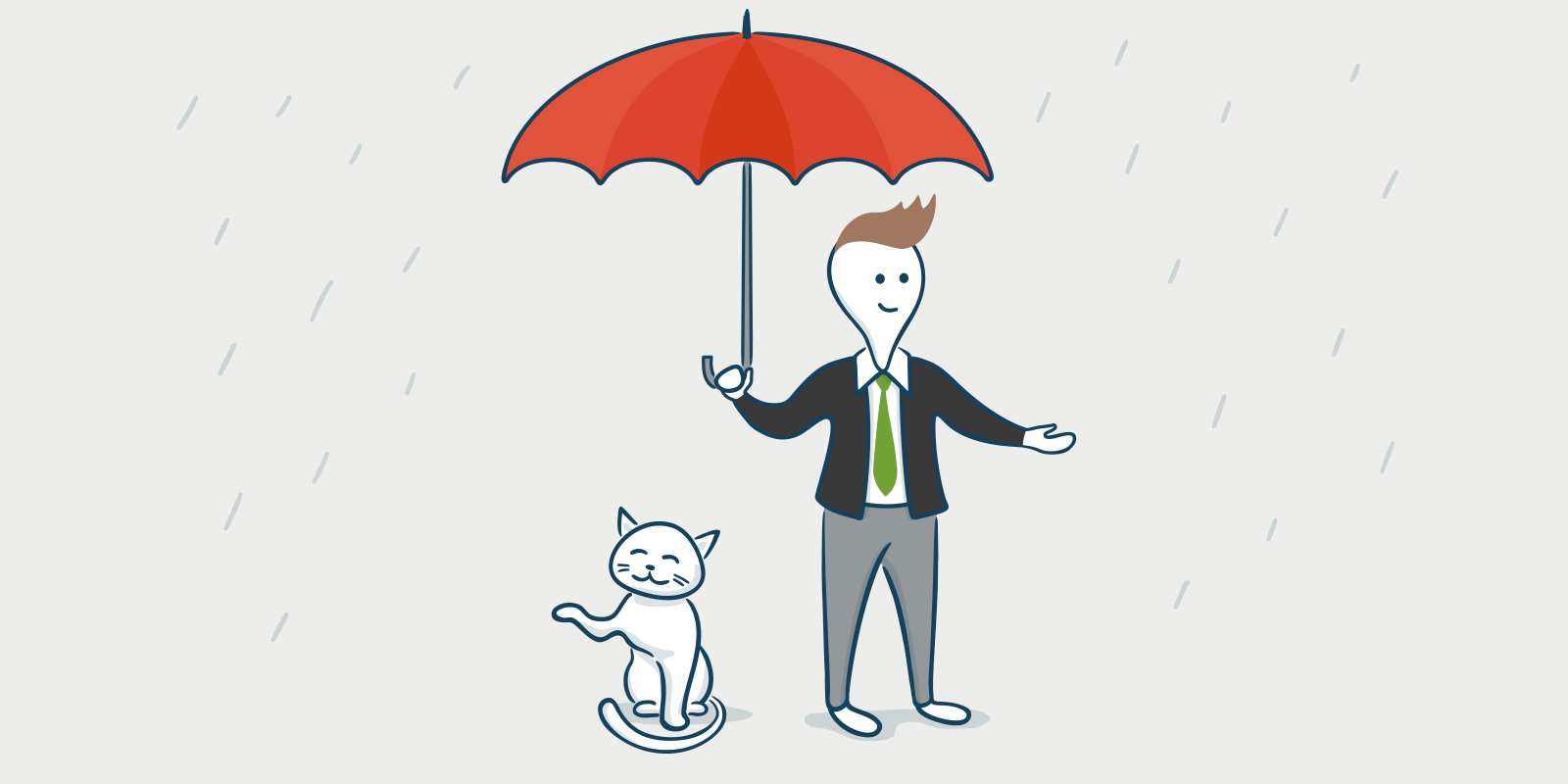
As landlords in the UK, there’s more to owning rental property than just collecting the monthly rent payments. Countless things can go wrong, from leaky roofs to broken boilers and tenant damages.
That’s why buy-to-let insurance is so important — it helps protect your investment and ensures you’re covered financially if something unexpected happens.
That said, what are the most common landlord claims in a buy-to-let property?
This blog post intends to share some of the most common issues you can encounter as a landlord. If you’re already a landlord, chances are you’ve encountered at least one or two of these yourself. Read on to find out the types of claims frequently submitted to insurance companies so you know what to watch out for with your properties.
Table of Contents:
- 6 Typical Landlord Claims in a Buy-to-Let Property ;
- Liability Claims for Injuries to Tenants ;
- Legal Expenses for Evicting Problem Tenants ;
6 Typical Landlord Claims in a Buy-to-Let Property
Not having proper insurance is a common mistake landlords make when renting. Insurance for your rental property can save you from many expenses in the long run. In fact, about 85% of landlords in the UK have taken out insurance policies to cater to issues they’re likely to face while managing their buy-to-let properties.
So, what are the most common landlord claims in a buy-to-let property?
Here are six popular reasons why you should adopt landlord insurance policies:
- Rent default ;
- Water damage ;
- Fire and smoke damage ;
- Storm damage ;
- Loss of rent claims due to property damage ;
- Vandalism and burglary.
Rent Default
Dealing with tenants who fail to pay the rent is a landlord’s worst nightmare. Rent default insurance helps ensure you continue receiving an income from your property by paying the lost rent for a set period while you work to evict the tenants and find new ones. This coverage provides peace of mind that tenants won’t disrupt your income if they don’t pay.
Water Damage
Leaks and floods can be catastrophic, and water damage is one of the most common claims landlords make — up to 37% of homeowners testify to this. Water damage can be extensive and expensive, whether burst pipes, leaky roofs, overflowing sinks or appliances. Insurance helps cover the costs to repair any water damage and replace carpets, cabinets or other affected parts of the property.
Fire and Smoke Damage
Although rare, fires can occur, and smoke and fire damage claims help landlords recover costs from events outside their control. Depending on the insurance you purchase, it may help pay for cleaning and repairs or even the cost of restoring furniture and appliances needed to make the property livable again.
Storm Damage
Powerful storms like hurricanes, tornadoes, hailstorms or windstorms can cause damage to the roof, siding, windows, gutters and more. Claims for storm damage will cover the costs to repair or replace any parts of the property damaged by the storm. You may also think about purchasing loss of rent insurance as damage may be severe enough to force tenants to vacate.
Loss of Rent Claims Due to Property Damage
One of the most common landlord claims in a buy-to-let property is for loss of rent due to property damage. If your rental property experiences damage such that it’s uninhabitable, you lose steady income from tenants.
You can lose rent due to:
- Water damage from burst pipes or leaks
- Fire and smoke damage
- Failure of essential equipment
As with any insurance, ensure you have adequate coverage limits and understand what your policy covers and doesn’t. However, when the unexpected happens, buy-to-let insurance can help reduce financial losses and get properties back to rentable states as quickly as possible.
Vandalism and Burglary
Unfortunately, property damage from vandalism, burglary or theft is common in the UK, with a staggering rate of one home being broken into every five minutes. Insurance will cover the costs to repair the damage done to the property during a break-in and replace or reimburse the value of any items stolen.
Statistics show UK landlords filed about £4m insurance claims in 2021 alone, with around 50% of claims paid out. Of this figure, most of the claims were due to water and fire damage.
These unforeseen circumstances and costs are why you should have insurance for your investment properties. It’s reassuring to know coverage is in place for the significant occurrences that could impact your buy-to-let properties.
Liability Claims for Injuries to Tenants
You should do your best to keep your properties safe and hazard-free. But accidents happen, and sometimes tenants may suffer injuries. In these cases, you may need to file liability claims on your buy-to-let insurance to cover costs.
What are the most common landlord claims in a buy-to-let property regarding liability?:
- Slips and Falls: A typical liability claim involves slips, trips, and falls on the property. If a tenant slips on a wet floor, tumbles down poorly lit stairs, or falls off a balcony or deck needing repair, they could hold you responsible for any injuries. Insurance can help pay their medical bills, lost wages, and other expenses.
- Pet Attacks: Some tenants keep pets, and in rare cases, those pets may attack and injure other tenants, guests, or service providers on your property. You could face liability in these situations, especially if you knew an animal was dangerous yet failed to enforce pet restrictions. Your insurance can cover injuries and damages in a pet attack.
While the odds of making liability claims are small, they do happen. The good news is that with comprehensive buy-to-let insurance, you have protection in place for these unexpected events. Be sure to stay on top of property maintenance and safety rules to minimise tenant risks and lower the possibility of future claims. But when the unforeseen does occur, you can rest assured knowing your policy has you covered.
Legal Expenses for Evicting Problem Tenants
Life as a landlord isn’t always rosy, and you may sometimes need to take strategic action. While most tenants are respectful and pay rent on time, some end up causing damage or refusing to pay rent, causing stress to landlords in the process. In these cases, you may have to pursue legal action to evict them from the property.
Throughout the lengthy eviction process, the tenant isn’t paying rent and may continue damaging the property. Legal expenses insurance helps cover these costs, so you’re not out of pocket. The policy reimburses fees for serving notices, applying for possession orders, instructing bailiffs, and, in some cases, rent arrears. Without this insurance, dealing with a problem tenant could cost you thousands of pounds.
What are the most common landlord claims in a buy-to-let property regarding problematic tenants?
They include:
- Attorney fees ;
- Professional cleaning and repairs after tenants leave the property in poor condition ;
- Rent arrears when tenants do a “runner” ;
- Recovery of unpaid utility bills left in the tenant’s name.
Legal expenses insurance gives you peace of mind that you can take necessary action against troublesome tenants without financial hardship. As landlords, it’s an essential policy to have in place. Another helpful tool for landlords is the Rentila property management software — a platform that lets you manage your buy-to-lets from a single portal.
Most Common Landlord Claims in a Buy-to-Let Property: FAQs
Can I claim for decorating a rental property?
No, landlords can’t make an insurance claim for decorating a rental property. Landlord insurance typically covers damage to the physical structure of the property, as well as any personal property that the landlord owns and leaves in the property. It can also cover the cost of lost rent if the property becomes uninhabitable due to a covered loss.
Can I claim a new kitchen on a rental property?
In short, yes and no.
Whether or not you can make an insurance claim for a new kitchen on a rental property depends on the specific terms of your insurance policy. Most landlord insurance policies will cover damage to the property’s physical structure, including the kitchen. However, some policies may have exclusions for certain types of damage, such as wear and tear or damage caused by the tenant.
If your insurance policy does cover damage to the kitchen, you’ll need to file a claim with your insurance company. The insurance company will then investigate the claim and determine whether or not it’s covered. If the claim is approved, the insurance company will pay for the cost of repairs or replacement.
In some cases, you may be able to make an insurance claim for a new kitchen, even if the policy doesn’t specifically cover kitchen damage. This is because some policies have a provision that allows for coverage of “all risks” of loss or damage to the property. If you can prove that the damage to the kitchen was caused by an insured hazard, such as a fire or a storm, you may be able to claim this provision.
However, it’s important to note that not all insurance companies will interpret the “all risks” coverage similarly. Some companies may only consider certain issues to be covered, such as fire, lightning, and vandalism. Others may interpret “all risks” more broadly to include any unforeseen event that causes damage to the property.
If you’re considering making an insurance claim for a new kitchen, carefully review your policy to determine whether or not it’s covered. You should also contact your insurance company to discuss the specific circumstances of the claim.
Is buy-to-let still worth it?
While buy-to-let investment has faced some challenges in recent years due to tax changes and tighter regulations, many landlords are still finding it profitable, especially in some areas of the country where rents are increasing.
Buying at a reasonable price, keeping loan interest rates low, maximising insurance claims, and consulting property investment experts are all key factors contributing to a worthwhile buy-to-let investment. The expenses you can claim through buy-to-let insurance are essential to making the numbers work and generating solid returns from your rental properties.
Most Common Landlord Claims in a Buy-to-Let Property: Things to remember
Life as a landlord goes beyond receiving rent checks and cashing in on passive income. As we’ve seen, many unforeseen circumstances can arise, requiring insurance claims to remedy issues with properties and tenants.
The most common landlord claims in a buy-to-let property run the gamut from:
- Water damage ;
- Accidents that cause injury ;
- Theft ;
- Malicious damage by tenants.
The key is ensuring you have the proper buy-to-let insurance to safeguard your investment and provide coverage in case of costly events outside your control. Staying on top of policy details and filing claims promptly and accurately is well worth the time to get issues resolved and your property back in working order. Though being a landlord has challenges, it can still be rewarding with the proper risk management and proper guidance from property investment experts.
Don’t forget to sign up for our free property management tool today to streamline your routine administrative tasks as a landlord.
landlord claims.


 Protect the environment. Reduce paper consumption and help save the trees as well as save money at the same time.
Protect the environment. Reduce paper consumption and help save the trees as well as save money at the same time. 
